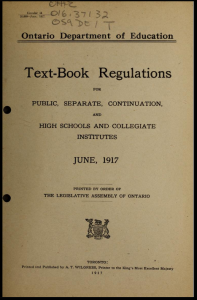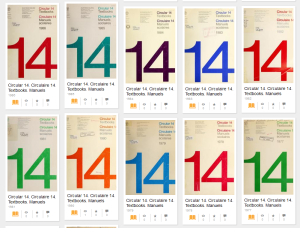As the days get colder and leaves change color, we welcome Fall at OISE Library, and the festivals celebrated during the month of October.
The second weekend of October marks Thanksgiving and we have lots of stories for a variety of age groups that will bring the celebration to the classroom.
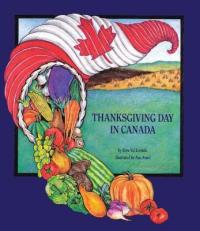 “Thanksgiving Day in Canada” by Krys Val Lewicki, illustrated by Ana Auml, follows Irene and her family as they celebrate Thanksgiving. Irene’s grandparents explain the history of thanksgiving in Canada and describe how thanksgiving was celebrated by their family. This book is a great way to show students the importance of giving thanks and sharing during the Thanksgiving holiday, and throughout the rest of the year.
“Thanksgiving Day in Canada” by Krys Val Lewicki, illustrated by Ana Auml, follows Irene and her family as they celebrate Thanksgiving. Irene’s grandparents explain the history of thanksgiving in Canada and describe how thanksgiving was celebrated by their family. This book is a great way to show students the importance of giving thanks and sharing during the Thanksgiving holiday, and throughout the rest of the year.
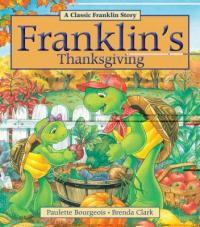 We also have fun thanksgiving stories found in the Children’s Literature Collection at OISE, like the popular Franklin series. In “Franklin’s Thanksgiving”, based on characters created by Paulette Bourgeois and Brenda Clark, Franklin looks forward to his grandparents coming over for Thanksgiving. When his grandparents are unable to make it, the turtle family brings the whole neighborhood together for a Thanksgiving celebration. This book is recommended for ages 4-7.
We also have fun thanksgiving stories found in the Children’s Literature Collection at OISE, like the popular Franklin series. In “Franklin’s Thanksgiving”, based on characters created by Paulette Bourgeois and Brenda Clark, Franklin looks forward to his grandparents coming over for Thanksgiving. When his grandparents are unable to make it, the turtle family brings the whole neighborhood together for a Thanksgiving celebration. This book is recommended for ages 4-7.
In “International Fall Festivals”, Marilynn G. Barr takes you on a journey from continent to continent to celebrate fall. At each stop, we have a map, regional legends and folk tales, a description of the regional fall festivals, as well as fun activities and crafts to bring the celebrations to life. This book is a great way to show students international fall festivities.
At the end of the month we have the celebration students of all ages are the most excited about; Halloween!
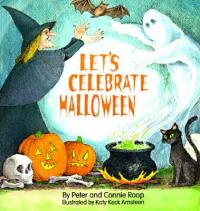 Start off your Halloween celebrations with “Let’s Celebrate Halloween” by Peter and Connie Roop, illustrated by Katy Keck Arnsrteen. This book gives a history of Halloween and an explanation for all the activities and symbols connected with the festival. With this book, your students will know why we have witches on Halloween, and why we trick or treat in costumes. Filled with lots of illustrations, this book is a great way to teach you students about Halloween.
Start off your Halloween celebrations with “Let’s Celebrate Halloween” by Peter and Connie Roop, illustrated by Katy Keck Arnsrteen. This book gives a history of Halloween and an explanation for all the activities and symbols connected with the festival. With this book, your students will know why we have witches on Halloween, and why we trick or treat in costumes. Filled with lots of illustrations, this book is a great way to teach you students about Halloween.
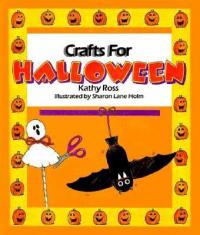 Crafts are a fun and engaging way to bring Halloween to your classroom. In “Crafts for Halloween” by Kathy Ross, illustrated by Sharon Lane Holm, we have lots of easy to make crafts for Halloween. Each craft features a list of items needed to make the craft and detailed instructions with images! From sock pumpkins to floating ghosts to spider webs and many more, your students will have a blast making these festive crafts.
Crafts are a fun and engaging way to bring Halloween to your classroom. In “Crafts for Halloween” by Kathy Ross, illustrated by Sharon Lane Holm, we have lots of easy to make crafts for Halloween. Each craft features a list of items needed to make the craft and detailed instructions with images! From sock pumpkins to floating ghosts to spider webs and many more, your students will have a blast making these festive crafts.
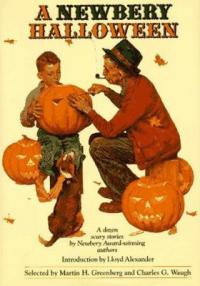 One thing we can’t forget on Halloween is scary stories! We have lots of books filled with scary stories that you can share with your students. Selected by Matrin H. Greenberg and Charles G. Waugh, “A Newbery Halloween” features twelve scary stories by Newbery Award-winning authors. These stories of ghosts, witches and pranksters will bring chills, thrills and laughter to your classroom.
One thing we can’t forget on Halloween is scary stories! We have lots of books filled with scary stories that you can share with your students. Selected by Matrin H. Greenberg and Charles G. Waugh, “A Newbery Halloween” features twelve scary stories by Newbery Award-winning authors. These stories of ghosts, witches and pranksters will bring chills, thrills and laughter to your classroom.
Another book filled with fun Halloween stories and poems is “A Hallowe’en Acorn” by Eileen Colwell. This book is a collection of traditional stories from around the world, like the tale of Baba Yaga in Russian folklore, as well as stories from Scotland and Ireland.
We have lots of books and other resources at OISE Library that are sure to bring these celebrations to life in your classrooms, like the films “Thanksgiving” and “Halloween”.
All of the books in the current display, found on the Ground floor of OISE Library are available to check out. Simply speak with the Circulation staff at the Service Desk and they’ll help you out!
Have a safe and happy Thanksgiving and Halloween!

